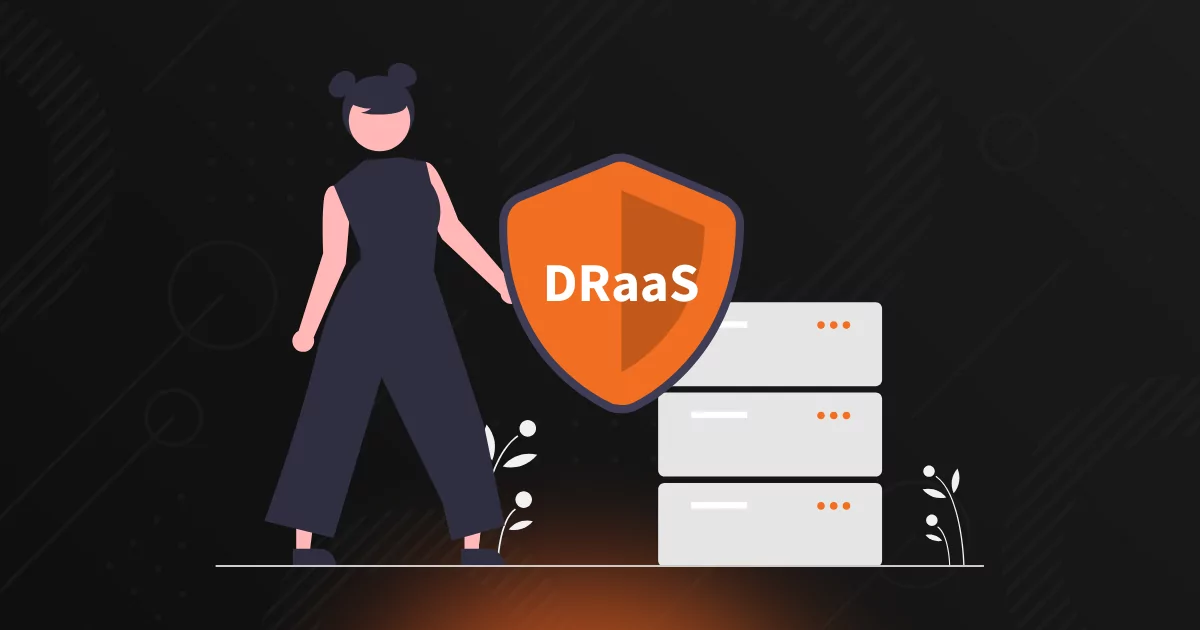
How to Create a Business Continuity Plan in 2023
Organizations universally recognize the importance of business continuity. Operational disruptions can come from many sources, from natural disasters, including extreme weather events, malicious attacks such as ransomware infection, or global pandemics like the Covid-19 outbreak.
With increased dependence on information technology, networked systems, and integrated supply chains, a wider range of disruptive causes need consideration, and the business continuity process becomes more complex. Therefore, an effective business continuity plan that maintains and recovers critical business functions is essential.
In this guide, we’ll look at what is a business continuity plan and how effective planning can help lessen disruptive events’ adverse impacts and improve organizational resilience.
Table of Contents
What is the purpose of a business continuity plan?
The primary purpose of your business continuity plan is to formally document the critical information your MSP needs to respond to any disruptive event and maintain business operations at a minimum acceptable level. In addition to this crucial business management role, the plan should also detail all other incident response and recovery actions deemed necessary.
The plan must provide clear, unambiguous directions for a timely response as a sequence of instructions. These instructions give the response team all the information needed to react and recover. Details should include the responsibilities and authority of each response team member. The plan should also provide access to all critical information needed to follow the instructions.
Successful disaster recovery
Successful disaster recovery requires business planning to respond to the catastrophic event that creates the initial disaster. MSP continuity planning will detail how the business should react during any disaster, what actions are necessary, and post-incident recovery actions. Effective continuity planning and a disaster recovery plan will minimize recovery timeframes and restore normal operations.
Protecting brand, reputation, and revenue streams
Effective business continuity goes beyond restoring the provision of products or services. First, a MSP will have a maximum tolerable period of disruption to restore operations. Beyond this point, continued disruption will negatively impact the business through damage to customer confidence or sales that make the business unviable.
Supporting compliance and insurance requirements
Statutory and regulatory compliance requirements were the original driver for MSP continuity planning with clients in regulated sectors such as financial services. However, corporate insurance policies covering business interruption or cyber disruption are now the main drivers for organizations to demonstrate adequate preventative measures and effective processes to satisfy coverage prerequisites. The continuity plan is the mechanism to demonstrate adequacy.
Ensuring business survival
Businesses cannot afford the unlimited time to recover from a disruptive event. Until the restoration of operations, there is a loss of income from business processes. At a point in time, the accumulative costs of running the disrupted business without this income will exceed the business’s reserves, liquidity, and borrowing capability.
Defining the business’s Recovery Point Objectives (RPO) and Recovery Time Objectives (RTO) is essential. You can read more about these critical measures in RTO vs RPO: Two key components of BCDR success.
These factors determine the maximum tolerable period of disruption and govern the recovery time objectives of the business. The continuity plan ensures that whatever the turmoil, the company will meet recovery time objectives and ensure the business’s survival.
Key elements when developing a reliable continuity plan
Reliable continuity planning is necessary to ensure recovery strategies are effective for all credible disruptive events, meeting each recovery point objective within its recovery time objective with no unacceptable consequences.
What is BCDR? Business continuity and disaster recovery guide
BCDR is business continuity and disaster recovery. These are interrelated practices with several differences that a business needs to understand when business continuity planning. Business continuity focuses on maintaining operations during disruptive events, which differ from disaster recovery actions. Developing a reliable continuity plan requires an understanding of these differences to be effective.
In this helpful guide to Business Continuity Plan vs. Disaster Recovery Plan, you can read more about the difference between business continuity and disaster recovery planning.
Build a dedicated BCDR team
Business continuity operations encompass all departments of an organization, operations, human resources, IT, and finance. Creating a dedicated team to manage business continuity and disaster recovery actions is critical. Each team member needs clear responsibilities and appropriate authorization to perform their duties.
The composition of the team will be dependent on the business. Creating the team including key decision-makers for each client is recommended. This engagement is essential where roles such as corporate governance, information security, or enterprise risk management can overlap with business continuity.
Create a business continuity plan checklist
Creating a business continuity plan checklist will aid the creation of a continuity plan by ensuring that you include all the required elements and provide a means to track progress. IT Governance offers a helpful 3-Step Business Continuity Plan Checklist to aid the creation of your checklist.
Conduct a thorough risk assessment
Identifying and understanding your MSP’s business continuity requirements is critical for successful planning. A business impact analysis will allow you to estimate the impact of disruptive events over time to determine your MSP’s response, operational and recovery priorities, and resource requirements. A risk assessment can then analyze the risks to prioritize recovery activities and inform your business continuity plan checklist.
This risk assessment must thoroughly identify, analyze, and manage all credible risks. The risk assessment process is a systematic, iterative, and collaborative process that draws on the knowledge and experience of stakeholders within the organization.
Iron out the details
The continuity plans need to spell out precisely what actions the team should take should an event trigger the business continuity process. Given the enormous range of potentially credible risks to a typical business and variances in recovery actions for each, creating the plan can be complex and demanding. However, an effective plan starts small to build a solid foundation from which it can expand and evolve into the final comprehensive document.
Ongoing testing and adjustments
Validating the business continuity plan is essential to the development and maintenance processes to ensure the plans are correct, complete, and coherent. Plans comprise sequential actions to achieve the required recovery within a set time. Therefore, ongoing testing and adjustment are necessary to ensure steps are in the correct order, all prerequisite information is available, and the person performing each step can complete their required duties.
You can find helpful guidance for ongoing testing in this Gartner guide for how to Stress-Test Your Business Continuity Management.
Educate team on safety procedures
A vital element of any emergency response aspects of business continuity and disaster recovery are the steps required to protect the safety of all personnel, including bystanders and the public. The business continuity teams should all have a thorough awareness of safety procedures and a collective responsibility to ensure correct implementation. The focus on preserving safety and security is a crucial tenet of any organizational culture that the business continuity plans should promote.
Testing the plan
Business continuity plans require testing to ensure they operate effectively under all conditions, that the person implementing the plans is competent, and that the business continuity team is cohesive.
Testing can take the form of exercising plans under practice conditions or review by subject matter experts. As businesses evolve, personnel change, or the operating environment changes, plans may need adjustment.
Watch Axcient’s on-demand session with Robert Cioffi sharing his account of trying to recover his client’s data after the Kaseya attack.
Crisis communication strategy
A crisis communication strategy sets the message content, tone, and media strategy and outlines the authorizations and responsibilities for issuing communications.
Internal and external communications at all levels are necessary during the business continuity response process. However, inconsistent or contradictory messaging can cause incorrect action or reputational damage.
The availability of live streaming and instant social media uploads has made the crisis communication strategy even more critical for business continuity and reputation management.
How to review and adjust your continuity plan
An essential part of the business continuity process is validating the plans to ensure they continue to meet their overall business objectives and the requirements from the risk assessment process. As the business and its operating environment change, it needs to adjust the plans to stay in step. Novel threats may also emerge that can create additional credible disruptive events, such as the recent sudden global pandemic that led to restrictions on the movement of personnel and the unprecedented halting of supply chains for significant periods.
Exercising your plan
The continuity processes require exercising to prove they are practical and dependable. Exercises must be realistic to identify any deficiencies or gaps in the response actions, ensure the team performing the activities has adequate training, and validate any underlying assumptions. The business uses these exercises to continuously improve the plans and team competency using review results and lessons learned to refine and adjust the business continuity processes.
There are two main techniques available to exercise a plan.
- Tabletop role-playing scenarios with the business continuity team acting out recovery actions without disrupting business operations
- A live simulation where all affected staff act out recovery actions to an imaginary event which will cause business disruption during the test
Typical scenarios that you can role-play or simulate include:
- Failure of computer systems supporting a critical business operation
- A ransomware attack resulting in loss of business information
- Loss of a utility service such as electricity supply, internet connection or water supply
- Evacuation of a facility due to an incident such as a bomb warning, chemical leak, or flooding
- Unavailability of a group of key personnel due to an incident such as a contagious illness or accident
- A surge of customer calls/ tickets for support and information
You can find Top Tips for Running a Business Continuity Exercise on the BCI website, which includes a helpful exercise cheat sheet and report template to aid running exercises.
Reviewing your plan
The review process ensures that the business continuity plans remain effective, proportionate, and reasonable for the business. It also provides an opportunity to measure the quality of the recovery actions and the competence of the response team.
Maintaining a positive business continuity organizational culture and response team cohesion requires the review process to adopt a positive attitude and constructive approach that acknowledges strengths and capability effectiveness. The goal of the review process is to ensure plans remain up-to-date and operationally effective.
How to choose the right business continuity solution
Business continuity solutions deliver the required response that ensures recovery from a disruptive event. The business continuity policies, strategies, and requirements detail what business functions need restoration and their timeframes. The business continuity solutions describe how to recover all aspects of business activities, including facilities, infrastructure, supply chains, and personnel. They define how to perform the recovery actions that achieve this.
Typically, when developing a business continuity plan, there will be more than one solution. Selecting the right solution will depend on the priorities of the recovery process. For example, solution designs can minimize the period of disruption, limit its impact, or prioritize the availability of resources or services during the recovery process.
The business continuity solutions detail how to deliver the policies, strategies, and requirements while balancing any risks created by the recovery solution and meeting any constraints the business imposes.
Final thoughts
MSPs and their clients face various challenges in their day-to-day operations. Still, one of the common causes of business failure is a single unexpected disruptive event that can suddenly halt operations. Therefore, having a tried and tested plan ready should such an event occur is essential if the business is to have the best chance of successful recovery.
Business continuity planning creates ready-to-go solutions that allow businesses to restore essential business functions required for the organization to survive when faced with significant disruption.
The key to success for continuity planning is a comprehensive set of plans that cover all credible disruptive events that a team of qualified and empowered staff has tested, adjusted, and proven effective.
FAQs
What is business continuity?
To understand why business continuity management is essential, you need to understand what is meant by business continuity. The business continuity planning process sits at the heart of the building and improving business resilience to ensure that the business can maintain the delivery of products or services within acceptable time frames at a sufficient capacity during and following any disruptive event.
You can find more information on what is meant by business continuity in the Introduction to Business Continuity from the Business Continuity Institute (BCI). This helpful resource defines key terminology, explores what potential incidents to consider, assesses potential business impacts, and explains how to make a contingency plan.
What is a business continuity plan?
The business continuity plan defines the actions necessary to maintain operations during and following a disruptive event. It’s the formal, verifiable, auditable record of a business’s continuity planning
What is business continuity impact analysis?
The business continuity impact analysis assesses the impact of all credible disruptive events on normal business operations. It aims to identify all vulnerabilities and weaknesses in business processes and their adverse effects on operations should a disruptive event occur.
Forrester’s Business Impact Analysis Template guides creating your business continuity impact analysis.
What is the difference between business continuity and disaster recovery?
The main difference is that for disasters, recovery planning covers restoring halted business processes following a catastrophic event within a required timeframe. In contrast, business continuity covers maintaining the business’s minimum operations needed during a disruptive event and the subsequent recovery to normal operations once the event has ended.
Author
Related posts
8 Tips for Optimizing Your Disaster Recovery Strategy
If disaster strikes, how will your organization respond?

How well could you sleep with reliable cloud-based backups and recovery?
Take a deep dive into Axcient’s proprietary, automated security features to see how we’re ensuring uninterrupted business continuity — no matter what:




